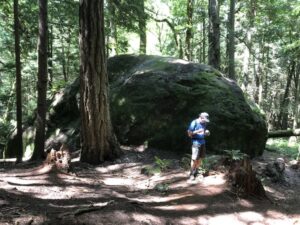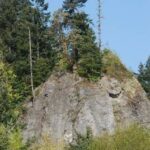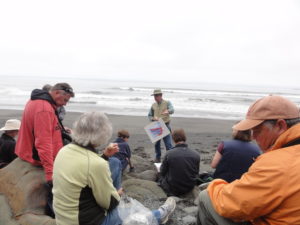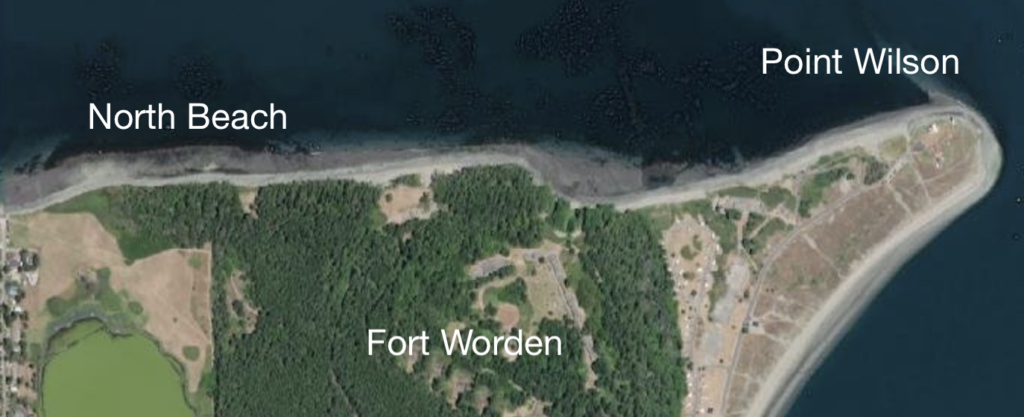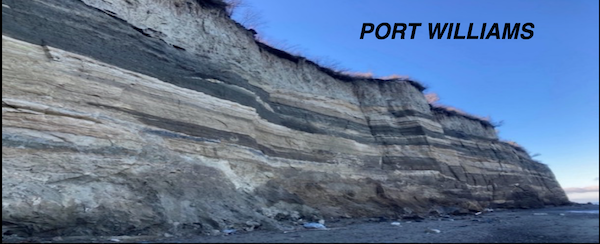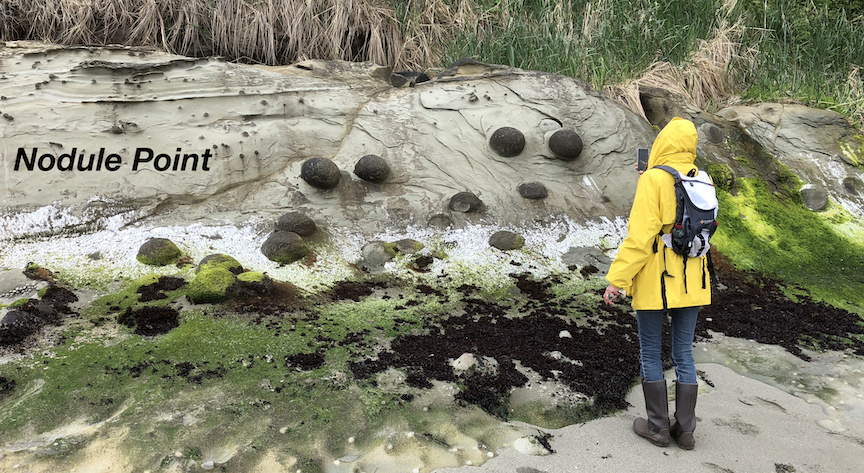
Nan Evans of KPTZ and local geologists, Jeff Tepper and Michael Machette, explore two significant rocky outcrops in Eastern Jefferson County – Tamanowas Rock and Peregrine Rocks, both just northwest of Chimacum. To download the field trip guide that this interview was based on, click here.
The interview is for Nature Now, a weekly radio broadcast on KPTZ 91.9 MHz. Because Nan got so many interesting tidbits, the interview will be broadcast in two parts and each will be recorded as MP3s and be available if you can’t hear the broadcasts:
Show #587: Hard Rock Geology in Eastern Jefferson Country, Park 1
Broadcasts Oct. 5 at 12:30 PM, Oct. 7 at 5:30 PM, Oct. 8 at 12:30 PM
Listen in to learn how Tamanowas Rock was formed, what it can tell us about the ancient landscape of our region, why Tamanowas Rock is important to indigenous peoples, and what is being done to protect it. The recorded broadcast is available on KPTZ’s Nature Now page.
Show #591: Hard Rock Geology in Eastern Jefferson Country, Park 2
Broadcasts Nov. 2 at 12:30 PM, Nov. 3 at 5:30 PM, Nov., 5 at 12:30 PM
Exploring Peregrine Rock, a glacial erratic, gives listeners a chance to consider the impacts of glaciation on Eastern Jefferson County and to ask just where did the rock come from and how did it get here?

